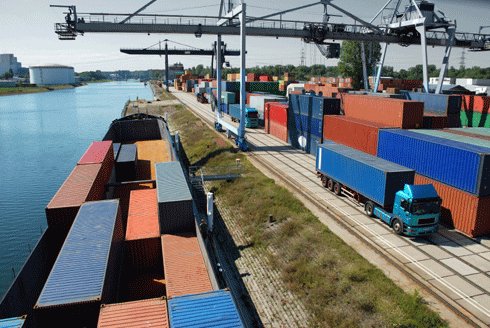
|
Published: 29 September 2014
Fewer migratory birds completing the long haul
Millions of migratory birds that fly tens of thousands of kilometres between Australia and Siberia are facing annihilation as development destroys the vital feeding grounds they rely on during their epic journeys, a Deakin University expert has warned.

|
|
Professor Marcel Klaassen with a greater sand plover bearing a geolocator, shortly before its release and take-off from Broome, WA, for its breeding grounds in Mongolia. Credit: Peter Struik
|
Director of Deakin’s Centre for Integrative Ecology, Professor Marcel Klaassen, has joined a growing chorus of leading scientists alarmed by a sudden and dramatic drop in the number of shorebirds arriving in Australia after their epic journeys across the globe.
‘The rate of decline among some of these bird species is such a dramatic drop in numbers as to be truly depressing,’ Professor Klaassen said.
‘For instance, the rate of decline in numbers of one of these, the curlew sandpiper, is a staggering 10 per cent per year, which means they face extinction within a decade.’
Professor Klaassen was among leading avian experts attending the recent 9th Australasian Shorebird Conference in Darwin, where countless papers delivered warned of a dire future for migratory shorebirds as habitat destruction, human disturbance and predation take their toll.
‘An endless number of papers presented at the conference painted the bleakest picture of the imminent collapse of some of the world’s greatest and most remarkable bird species,’ Professor Klaassen said.
‘Almost every paper painted a picture of incalculable loss of shorebirds on their flight paths. The situation as it was depicted was the most depressing look at the future imaginable.
‘The migration of millions of shorebirds every year from their breeding grounds in Alaska and Siberia to their non-breeding grounds in Australia is one of the world’s greatest wonders.
‘The birds lose two-thirds of their total body weight on the journey and their feathers are worn down to quill.
‘Some fly as many as 10,000 km non-stop in an incredible feat of endurance and some wing vast distances over a lifetime equivalent to flying to the moon.’
Professor Klaassen joined other concerned scientists at the conference to call for immediate government intervention and action to address the catastrophe facing migratory shorebirds.
‘When the Australasian Shorebird Conference met two years ago in Adelaide, it was noted then that things were looking grim for the birds because of the noticeable drop in their numbers.
‘Yet, just two years on, the situation seems far worse, far more dramatic and the worst case scenario.
‘These shorebirds rely on a chain of suitable habitats along their 15,000 km route. If, in that chain, there is a weak link, they are doomed.’
Professor Klaassen said the birds were being threatened by massive development, particularly around the Yellow Sea and on tidal flats and wetlands they have traditionally relied on for food to refuel for their fantastic, long flights.
‘We call for collaboration and co-operation between governments in the spirit of international agreements and involving all the countries covered by the bird’s flight paths to protect the shorebirds and their habitats,’ Professor Klaassen said.
At the Centre for Integrative Ecology, researchers have been examining the migratory behaviour of shorebirds to see how well they cope with changes in their environments on their epic trips between the northern and southern hemispheres.
‘One thing we are doing is using geolocators to track the key sites where the birds go to better understand what allows them to successfully migrate and what type of fuel management is needed en route,’ said Professor Klaassen.
‘We all encourage national governments to recognise and acknowledge the important role of the East Asian Australasian-Flyway Partnerships and do much more to protect wetlands and coastal habitat for future generations.’
Source: Deakin University



